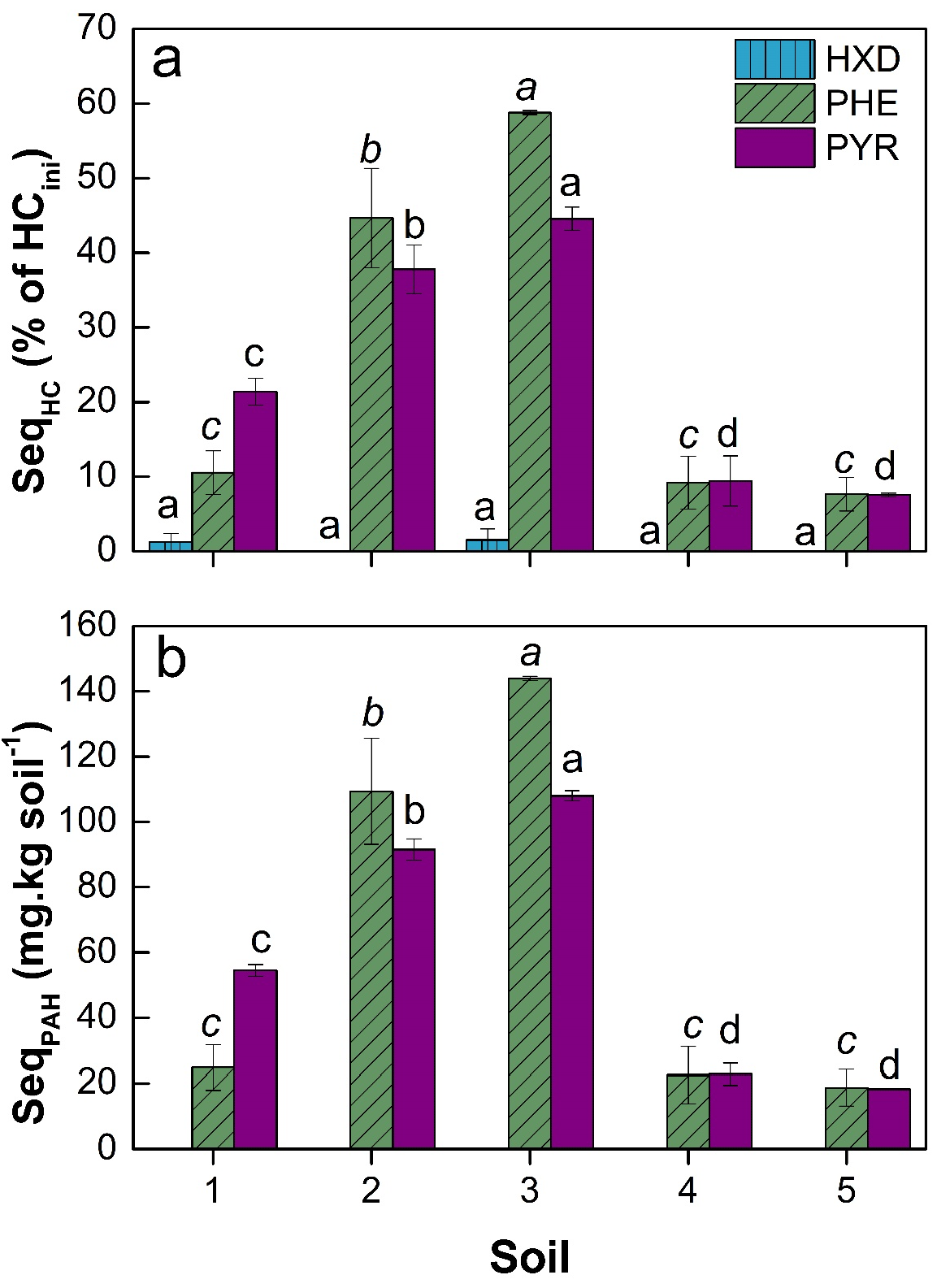 |
|
Soil organic matter (SOM) is a key factor controlling the fate of hydrocarbons in soils; however, there are no standardized methods to accurately estimate their sequestration. This study proposes an accessible analytical approach to estimate the capacity of soils to sequester hydrocarbons using the chemical characteristics of humic acids in SOM, saving time/costs by avoiding the extraction and analysis of hydrocarbons. A natural organic soil was modified by thermal treatments, obtaining five different soils. Their SOM was fractionated into humic (HA) and fulvic (FA) acids, which were characterized by UV-Vis and FTIR. The soils were contaminated with hydrocarbons (hexadecane, phenanthrene, and pyrene), and the sequestered concentration of each hydrocarbon was quantified. The soil treated at 350ºC presented the highest capacity to sequester PHE and PYR (>100 mg∙[kg soil]-1). The characteristics that significantly improved the sequestration of PHE and PYR were: i) FA of low molecular weight and degree of condensation, and ii) HA with high molecular weight, aromaticity, aliphaticity, polarity, and degree of condensation. Based the HA analysis by UV-Vis and FTIR, two equations are proposed to estimate - with > 80\% accuracy - the sequestration of PHE and PYR in soils with different characteristics in their SOM.
Keywords: hydrocarbon sequestration, soil organic matter, humic acids, spectrophotometry.
|
|
 |

